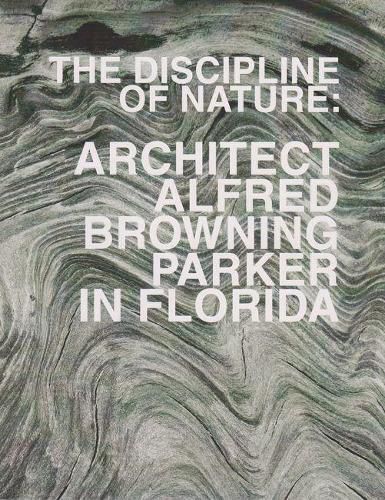Readings Newsletter
Become a Readings Member to make your shopping experience even easier.
Sign in or sign up for free!
You’re not far away from qualifying for FREE standard shipping within Australia
You’ve qualified for FREE standard shipping within Australia
The cart is loading…






Among the modernist architects who transformed postwar Florida into a laboratory of regionalist architecture, Alfred Browning Parker was an Iconoclast. He shared the conviction, common among young architects in Miami, that an authentic regional architecture had not yet been invented. Inspired by the power of place and eager to innovate, Parker became a disciple of American traditions and the region’s foremost organic architect. Extrapolating from Frank Lloyd Wright’s position on the architect’s role in society, Parker believed that architecture could be a harbinger of an authentic regional culture in Miami. He developed an architectural syntax that emphasized the centrality of human endeavor, in which design integrity was transcendent. Parker’s position derived from a deep respect for the earth and its resources, as well as a moral and aesthetic interest in the power of nature as a vital and rational force. He saw ecology as a guide understanding resources and their interaction, and a so as a discipline for ethical thinking capable of shaping an architectural response. Yet he also held a romantic view of the natural world, at once inspiring architectural ornament and offering a metaphor for design integrity. Parker promoted such values as beauty, craftsmanship, fitness, appropriateness, utility, unity, and balance. He subscribed to what theologian and philosopher Albert Schweitzer called reverence for life, finding purpose in a spiritual relationship with the universe generally, and the ecology of the planet specifically. He noted, We should judge architecture by how well it serves the growth of the human spirit. Throughout a career that stretched from 1942 until his death in 2011, Parker translated his ideals into tropicalist buildings that shaped the suburban and urban landscapes of Florida. A builder, businessman, artist, sculptor, furniture -maker, and teacher, he was also one of the few Florida architects to lecture on and publish his ideas. He produced essays and eventually a book to document his theories. Parker’s organic Florida architecture made him a regional figure and a national icon. His collaboration with the influential House Beautiful editor Elizabeth Gordon situated his Miami work, particularly his interpretation of the single-family home, in the national debate about modern American architecture. Parker’s expression of organic architecture changed over the course of his career, partly in response to national trends, but always in step with Florida’s maturity. Through his iterative forms, types, and constructive patterns he confirmed that change is a sure law of the universe. In the search for equilibrium between perpetual change and heartfelt principles, Parker distinguished himself as an extraordinary innovator.
$9.00 standard shipping within Australia
FREE standard shipping within Australia for orders over $100.00
Express & International shipping calculated at checkout
Among the modernist architects who transformed postwar Florida into a laboratory of regionalist architecture, Alfred Browning Parker was an Iconoclast. He shared the conviction, common among young architects in Miami, that an authentic regional architecture had not yet been invented. Inspired by the power of place and eager to innovate, Parker became a disciple of American traditions and the region’s foremost organic architect. Extrapolating from Frank Lloyd Wright’s position on the architect’s role in society, Parker believed that architecture could be a harbinger of an authentic regional culture in Miami. He developed an architectural syntax that emphasized the centrality of human endeavor, in which design integrity was transcendent. Parker’s position derived from a deep respect for the earth and its resources, as well as a moral and aesthetic interest in the power of nature as a vital and rational force. He saw ecology as a guide understanding resources and their interaction, and a so as a discipline for ethical thinking capable of shaping an architectural response. Yet he also held a romantic view of the natural world, at once inspiring architectural ornament and offering a metaphor for design integrity. Parker promoted such values as beauty, craftsmanship, fitness, appropriateness, utility, unity, and balance. He subscribed to what theologian and philosopher Albert Schweitzer called reverence for life, finding purpose in a spiritual relationship with the universe generally, and the ecology of the planet specifically. He noted, We should judge architecture by how well it serves the growth of the human spirit. Throughout a career that stretched from 1942 until his death in 2011, Parker translated his ideals into tropicalist buildings that shaped the suburban and urban landscapes of Florida. A builder, businessman, artist, sculptor, furniture -maker, and teacher, he was also one of the few Florida architects to lecture on and publish his ideas. He produced essays and eventually a book to document his theories. Parker’s organic Florida architecture made him a regional figure and a national icon. His collaboration with the influential House Beautiful editor Elizabeth Gordon situated his Miami work, particularly his interpretation of the single-family home, in the national debate about modern American architecture. Parker’s expression of organic architecture changed over the course of his career, partly in response to national trends, but always in step with Florida’s maturity. Through his iterative forms, types, and constructive patterns he confirmed that change is a sure law of the universe. In the search for equilibrium between perpetual change and heartfelt principles, Parker distinguished himself as an extraordinary innovator.